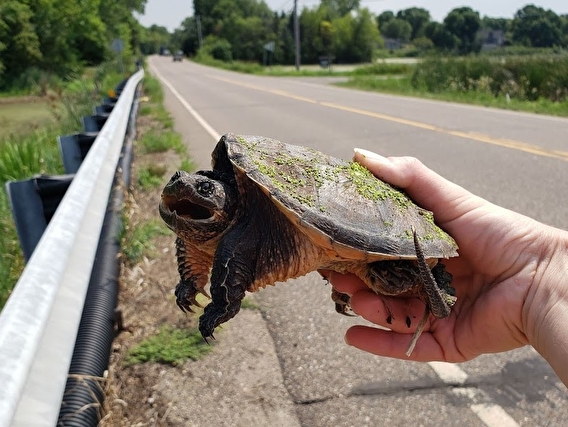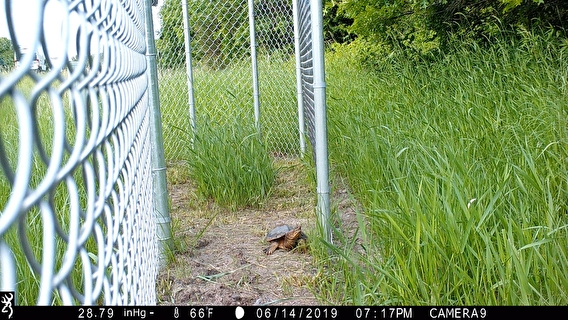
Car collisions with large animals—primarily deer—are a well-known safety hazard on Minnesota roads. However, small animals such as turtles cause problems of their own when motorists swerve or stop to avoid them.
Researchers at the Minnesota Zoo are studying turtle road safety and investigating different strategies for mitigating roadkill, such as chain link fences, barriers made from culvert pipe, and driver warning signs. Their goal is to see which methods are the most effective and cost-efficient.
Tricia Markle is a conservation research scientist with the Minnesota Zoo. Roads, she says, pose a particularly high risk to turtles: They are slow and bad at crossing roads, vulnerable to having their habitat fragmented, and slow to repopulate when their numbers drop.
“So, when we’re losing our adult turtles, we can have population collapse really quickly,” Markle says. “This is unfortunate, because turtles play a really important role in maintaining healthy lakes and wetlands.”
In cooperation with the Minnesota Department of Transportation, the Minnesota Zoo tested out six-foot chain link fences as a means of preventing turtles from getting onto the road. The goal was to direct the turtles toward safe culvert crossings; the ends of the fences had wraparound “J-turns” to make sure turtles didn’t simply find the end of the fence and wander onto the road.
This strategy proved extremely effective. A before-after comparison at four fence treatment sites in the greater Twin Cities region found that turtle death counts on the roads dropped by 60 to 80 percent after fence installation. Most of the deaths that did still occur proved to be of juveniles who were slipping through the two-inch chain link mesh; this problem was easily solved by adding ½-inch mesh to the bottom of the fences. After this adjustment, the death rate was up to 90 percent lower than at untreated roads.
However, Markle notes that chain link fence can be cost-prohibitive and won’t work in every situation.

Turtles don’t need a six-foot fence to block their movement, so the research team dedicated one test site in Dakota County, Minnesota, to an experimental fencing strategy that involved rolling out an eight-inch culvert pipe and fastening it against an existing guardrail to serve as a makeshift fence. It worked well, Markle says —it only took a couple hours to install, and turtle mortality rate dropped by about 50 percent at the site.
Markle says that wetlands (where turtle crossings are common) tend to have guardrails along them anyway, “So this might be a good solution in those situations.”
Another cost-saving strategy that Markle’s team looked into was turtle-crossing warning signs, which cost less than fencing and don’t require as much time or space to install. Unfortunately, Markle says, the seven test sites showed no significant change in turtle mortality rates, and the signs don’t solve the safety problem of drivers swerving or stopping to avoid turtles.
A final research report in progress. Moving forward, Markle says she would like to see more research into small animal underpasses to improve habitat connectivity.
—Sophie Koch, contributing writer
Learn more: